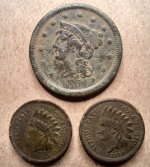bronzecannons
Full Member
Ship's story revealed in 435-year-old wreckage - San Felipe
Ship's story revealed in 435-year-old wreckage - wreck of the San Felipe
Read more: http://www.sfgate.com/cgi-bin/article.cgi?f=/c/a/2011/08/22/MN6P1KP7CN.DTL#ixzz1VxFbdrTP
An interesting read!
Ship's story revealed in 435-year-old wreckage - wreck of the San Felipe
Read more: http://www.sfgate.com/cgi-bin/article.cgi?f=/c/a/2011/08/22/MN6P1KP7CN.DTL#ixzz1VxFbdrTP
An interesting read!





